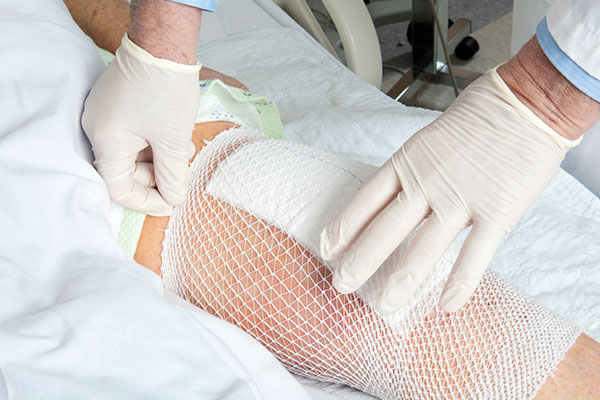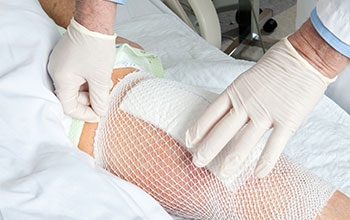
Recovering from hip or knee replacement surgery requires more than just rest and physical therapy—wound care plays a vital role in preventing complications and supporting a smooth recovery. One key factor is using the right type of wound dressing. Let’s explore several types of dressings commonly used after joint replacement surgery.
Why Wound Dressings Matter After Joint Replacement
Following a hip or knee replacement, surgical wounds need protection from bacteria, moisture buildup, and irritation. Proper wound dressings not only protect the incision site but also encourage faster healing and reduce the risk of infection—a top priority after major orthopedic procedures.
Surgical Mesh and Waterproof Dressings
Patients are generally sent home with a combination of internal sutures, surgical mesh, skin adhesive, and a waterproof outer dressing. This layered system—applied immediately after surgery—offers a strong, protective seal over the incision. The waterproof dressing, which resembles a large band-aid, typically stays in place for about one week and can be gently removed at home. Underneath, a mesh dressing continues to support the incision for another 2–3 weeks. As the mesh begins to peel at the edges, it can be safely trimmed with scissors. This advanced approach minimizes the risk of infection while supporting uninterrupted healing.
Standard Dressings: Gauze and Adhesive Bandages
As healing progresses or in less complex cases, simpler dressings like gauze and adhesive bandages may be used. These breathable materials offer basic protection and are easy to apply and remove. However, they generally require more frequent changes and lack built-in antimicrobial properties unless combined with topical agents.
Silver Dressings: Antimicrobial Protection
Silver-infused dressings are an excellent option for joint replacement patients at higher risk for infection. Silver has natural antimicrobial properties that help reduce bacterial growth around the incision site. These dressings may be used after total joint replacement to protect the surgical area during the early stages of healing.
Foam and Hydrocolloid Dressings: Comfort and Healing
Foam dressings provide cushioning—ideal for high-movement areas like the hip and knee. Hydrocolloid dressings, which form a gel over the wound, help maintain moisture balance and support the body’s natural healing process. Both options are useful during the intermediate stages of wound care when mobility is increasing.
Negative Pressure Wound Therapy (NPWT)
Also known as wound vac therapy, NPWT uses gentle suction to draw fluid out of the wound, reduce swelling, and stimulate blood flow. For patients with complex incisions, high BMI, or a history of delayed healing, NPWT is an advanced method proven to enhance recovery outcomes following joint replacement.
Choose the Right Wound Care for a Stronger Recovery
Wound healing is a critical part of your journey after knee or hip replacement. You will be recommended the best dressing based on your surgery type, health history, and risk factors.
For questions regarding your surgical procedure or recovery process, reach out to our office today.
AUTHOR: Dr. Nicholas Frisch is a specialist orthopedic surgeon focusing on minimally invasive hip and knee joint replacement as well as complex primary and revision surgery. He believes in creating a personalized experience with the highest level of service. For all appointments & inquiries, please contact our offices located in Rochester, MI.








